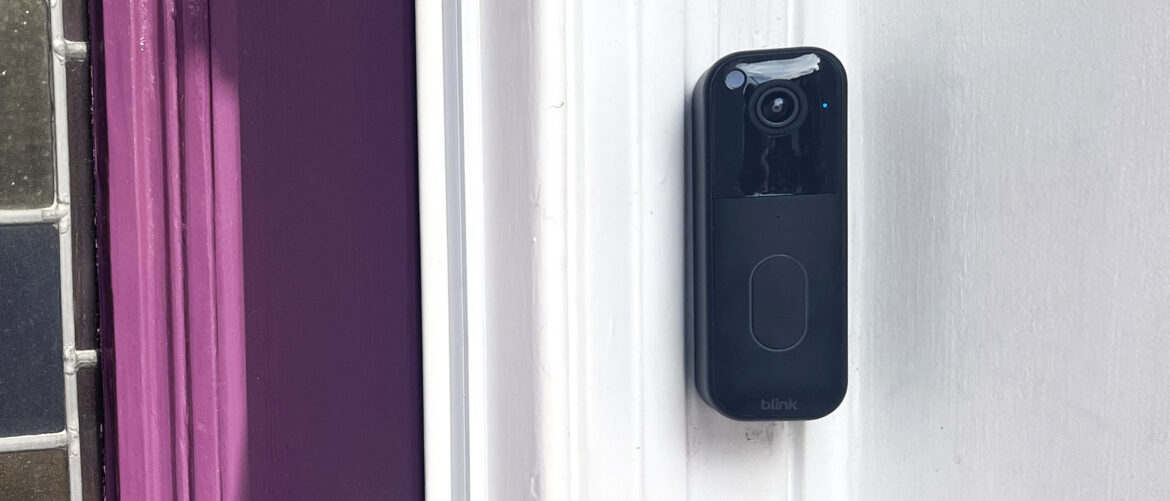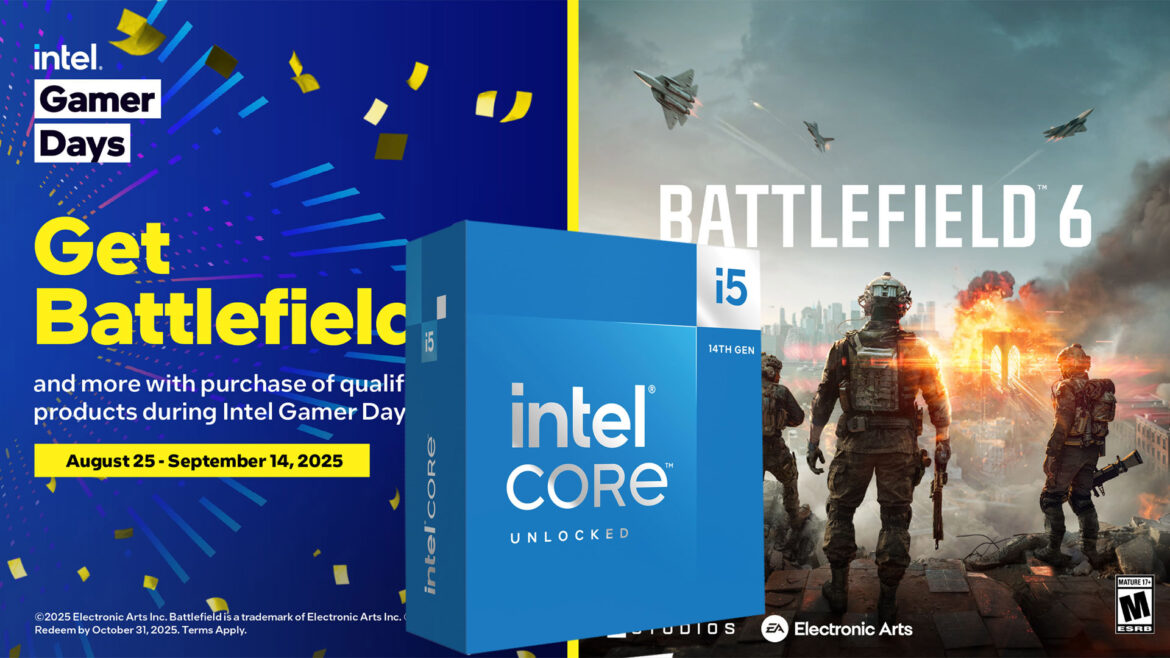Why you can trust TechRadar
We spend hours testing every product or service we review, so you can be sure you’re buying the best. Find out more about how we test.
Blink Video Doorbell (Gen 2) and Sync Module Core: two-minute review
The days of traditional ‘analog’ doorbells connected via wires to an internal chime are fast coming to an end. Increasingly, people are turning to video doorbells, which will send an alert to your mobile phone when someone comes to the door. They will even act as an intercom so you can talk to whoever is there whether you are in the house, walking the dog or sitting on a beach.
Like its predecessor, the Blink Video Doorbell doesn’t come with its own indoor chime. Instead, you can pair it with a Blink Mini 2 camera (sold separately) or connect via the Alexa app on your phone to a Fire Stick or Amazon Echo Show. This will allow you to see who is at the front door on your TV screen/multimedia display or you can get a voice message via your Amazon Echo Dot when someone presses the doorbell.
Alternatively, it may be possible to connect existing doorbell wiring from the Blink Video Doorbell to a legacy indoor chime providing its rated between 16 and 24 volts. Batteries are required for use whether you use existing doorbell wiring or not.
The Blink Video Doorbell (Gen 2) uses three AA lithium batteries (Image credit: Chris Price)
What I like about Blink devices is just how easy they are to add to an existing system. I’ve already got several Blink cameras around the house so adding one more was simply a case of scanning the QR code on the back of the device and adding it to the home set up. However, if you’ve never installed a Blink camera before you will need to download the app (Android or iPhone) as well as connect the sync module provided to your broadband router (this acts as a hub for up to 10 Blink security devices).
- Blink Video Doorbell (2nd Gen) + Sync Module 2 at Amazon for $39.99
Unfortunately, as the one supplied isn’t compatible with local storage via a connected USB flash drive, you will need to pay a monthly subscription for storing video footage and accessing the latest features – see subscription options below.
When it comes to mounting the video doorbell on the door there are two options. You can either use the standard flat mount or a wedge mount if you are placing it on a door architrave. As I was replacing the previous Blink video doorbell (Gen 1) I was hoping I could re-use the mount from that one to save time on installation. However, that wasn’t possible because this unit is a slightly different size.
Instead I used the black mount provided for the black video doorbell supplied by the manufacturer (a white version with white mount is also available). At least I didn’t have to screw two new holes in the wood as they’re positioned in the same place on the mount as the previous version.
Installing the Blink Video Doorbell (Gen 2) is very straightforward, particularly if you already have other Blink devices at home (Image credit: Chris Price)
Once installed, controlling the camera is simply a case of using the Blink app. One of the main differences between this model and its predecessor is the camera’s lens, in particular the aspect ratio. Whereas the previous model offered a more conventional 16:9 widescreen aspect ratio with 1080p resolution, the new video doorbell boats a square 1:1 aspect ratio with improved 1440p resolution.
It also offers a larger field of vision (150 degrees horizontal and 150 degrees vertical) compared to 135 degrees horizontal and just 80 degrees vertical on the previous model. The result is that not only is it possible to get a head-to-toe image of someone coming to the door, you can also view the ground – handy to see any deliveries that have been left outside your front door.
The in-app setup process is very simple (Image credit: Chris Price)
Certainly the 1:1 aspect ratio does take a little bit of getting used to, especially the square shape on the Blink home page next to all of the other more conventional widescreen cameras. However, it’s worth bearing in mind that, because the field of view is so much bigger than its predecessor you will need to reduce the device’s sensitivity, especially if you are paying for the Blink subscription with AI-powered Smart Detection.
Otherwise, you may well record every person and vehicle that goes past your house as well as those who come to the door. Not only will this severely reduce the lifespan of the batteries, it is also highly annoying to get pointless alerts every few minutes.
Blink Video Doorbell (Gen 2) and Sync Module Core: subscription options
There are two different subscription plans available depending on the number of Blink devices you own, and which features you require.
Swipe to scroll horizontally
Blink Video Doorbell (Gen 2) and Sync Module Core: price and availability
- List price $69.99 / £59.99 (about AU$110)
- Launched August 2025 with Sync Module
- Currently available in UK and US (not Australia)
With its second-generation video doorbell, Blink has managed to maintain the same $69.99 / £59.99 price point as the original video doorbell (you can now buy the earlier model for under £30 on Amazon in the UK without the sync module). Really, it’s exceptional value for money, much cheaper than a Ring video doorbell device, despite the two companies sharing Amazon ownership.
However, it’s not available in Australia at the time of writing, and it’s worth bearing in mind that if you want to benefit from the full functionality of the device, including the ability to store video clips, you will need to pay for a subscription costing from $3 / £2.50 a month. That’s because – unlike the first video doorbell which incorporated a sync module with the option of adding local storage – it’s not the case with the second-generation model.
You won’t be able to store videos recorded by the Blink Video Doorbell (Gen 2) on the Sync Module Core (Image credit: Chris Price)
Instead of the Sync Module 2, the second-generation Blink video doorbell features the more basic Sync Module Core. Personally, I find that a little bit cheeky, but then at least the monthly subscription fees are cheaper than most of the rivals (Ring subscription plans start at $4.99 / £4.99 a month).
In addition to unlimited cloud video storage, the Blink subscription package includes Blink Moments which stitches together multiple events from multiple cameras into one video. Then there’s AI-Powered Smart Detection which tells you whether the camera has captured a person coming to the door/walking past your house, or a vehicle in your driveway/driving along the road. To reduce the amount of footage captured, which can be quite overwhelming, we recommend reducing the device’s sensitivity and also editing the ‘motion zones’ (areas of the frame that are active or private).
Today’s best Blink Video Doorbell (Gen 2) and Sync Module deals
Blink Video Doorbell (Gen 2) and Sync Module Core: design
- Easy-to-install mounting bracket
- Chunky design
- Available in white or black
Blink cameras are renowned for being some of the most compact and lightweight devices on the market. However, the Blink Video Doorbell (Gen 2) is a little bit of an exception. Tipping the scales at 4oz/113g, it’s both heavier than the first-generation model (3.2oz/91g) and also a little thicker too at 1.44in/36.6mm compared to 1inch/27mm.
Image 1 of 2
The Blink Video Doorbell (Gen 2) is a little bulkier than its predecessor(Image credit: Chris Price)The Blink Video Doorbell (Gen 2) is a little bulkier than its predecessor(Image credit: Chris Price)
The main reason for this, of course, is that the new model incorporates space for three AA lithium batteries whereas the original model featured just two batteries. In turn, this means that battery life is much longer though it’s unlikely to be as long as the two-year lifespan that Blink’s marketing suggests.
Like its predecessor, two colour options are available (white or black) and there are two types of mount – one for placing flat on the door frame and another for mounting on a door architrave. Using the standard mount with the screws provided, it only takes around five minutes to install wirelessly, although if you are connecting to existing doorbell wiring the process is much longer. Since there’s no built-in chime, you’ll need to connect it to Alexa devices or buy a Blink Mini 2 camera to hear the doorbell indoors.
It only took around five minutes to install the doorbell with the included mount (Image credit: Chris Price)
Looks-wise, the second-generation model is a little different from its predecessor with a larger oval shaped button in the middle, compared to the round button on the first generation model. Recording is also more subtle with a small blue light on the top right indicating when video is being captured, rather than the area around the central button becoming illuminated in blue.
When the button in the centre is pushed by a visitor, it illuminates white and a message is sent to the connected phone telling you ‘someone is at the door’. As with the first-generation model, the doorbell sits inside a bracket but can be removed for changing batteries etc. by inserting a small metal ‘key’ in the base. It is also rated IP-65 weather resistant which offers greater protection against the elements than the previous model which was only IP-54 rated.
Blink Video Doorbell (Gen 2) and Sync Module Core: performance
- Good image quality (especially in Best mode)
- Stable video connection
- Overly sensitive camera
There’s no question that when it comes to performance Blink has upped its game with this second gen model. The first one was certainly OK, but not as good as some of the admittedly more expensive video doorbells from companies such as Ring. However, in nearly every respect, the Gen 2 model offers better performance than its predecessor.
Not only does it have a wider field of horizontal view (150 degrees compared to 135 degrees for the first model), it also offers a 150-degrees vertical field of view for a perfectly square 1:1 aspect ratio image. At first I thought that was a bit odd, but having used it for a little while it’s incredibly useful. Not only can you see an entire head-to-toe image of someone at the door you can also see if a parcel has been left on your doorstep.
Image 1 of 2
The new square aspect ratio makes it easier to see both visitors and packages(Image credit: Chris Price)The new square aspect ratio makes it easier to see both visitors and packages(Image credit: Chris Price)
Whereas the previous model offered 1080p video resolution, the second-generation model boasts improved 1440p video resolution. Three video quality settings are on board (Best, Standard, and Saver). I settled on Best as it’s good to be able to see details more clearly although this will obviously reduce battery life. The second-generation model also offers improved night vision.
Of course, it’s not all good news. The downside of the camera lens being much bigger is that it also collects much more footage – too much. Blink cameras are known for being sensitive anyway and this latest model is no exception.
Even with privacy zones set up, I found it necessary to dial the sensitivity right down to avoid false alerts (Image credit: Chris Price)
With motion sensitivity set to five, I found the camera was recording around 100 events a day, most of them of people walking their dog past the house or delivery vans going by. Even with the ‘privacy zones’ set up to block out the extremes of the frame (including areas of sky) the camera was still extremely active. In the end it was necessary to reduce sensitivity to just two out of 10 so it only captured people actually coming to the door.
Finally, it’s worth mentioning the sync module. Whereas the previous model included the Sync Module 2 with a USB socket so you could insert a USB flash drive for storing video clips, this model comes with the Sync Module Core without local storage. Essentially this means if you want to store video clips you will need to pay a subscription of at least $3 / £2.50 a month.
Should you buy the Blink Video Doorbell (Gen 2) and Sync Module Core?
Swipe to scroll horizontallyBlink Video Doorbell (Gen 2) score card
Attribute
Notes
Score
Value
This video doorbell represents pretty good value for money. Even the monthly subscription charge for premium features is around half the price of some devices.
4/5
Design
Available in black or white, the Blink doorbell is a much bulkier model than its predecessor. It is accompanied by a small sync module which connects to your router.
4/5
Performance
Although the motion sensor is a little overly-sensitive, performance is very good indeed particularly the 1:1 aspect ratio for ‘head-to-toe’ video capture.
4.5/5
Overall
When it comes to performance Blink have upped their game with improved quality images and longer battery life. Just a shame the supplied sync module can’t be used for storing clips.
4.5/5
Buy it if
Don’t buy it if
Blink Video Doorbell (Gen 2) and Sync Module Core: also consider
Swipe to scroll horizontally
Product
Blink Video Doorbell (Gen 2) and Sync Module
Blink Video Doorbell (Gen 1) and Sync Module
Yale Smart Video Doorbell and Doorbell Chime
Ring Battery Video Doorbell Plus
Subscription price
From £2.50 a month
From £2.50 a month
From £3.50 a month
From £4.99 a month
Viewing angle
150 degrees horizontal
135 degrees horizontal
154 degrees horizontal
150 degrees horizontal
Network connection
Wi-Fi (2.4GHz)
Wi-Fi (2.4GHz)
Wi-Fi (2.4GHz)
Wi-Fi (2.4GHz)
Audio
Two-way audio
Two-way audio
Two-way audio
Two-way audio
Video
1440p Full HD resolution
1080p Full HD resolution
1080p Full HD resolution
1536p Full HD resolution
Power
Battery
Battery
Mains or battery
Battery
Hardware price
£59 (with Sync Module Core)
£59 (with Sync Module 2)
£129 (video doorbell), £29 (chime)
£129 (video doorbell), £139 (with basic chime)
If you’re not sure whether the Blink Video Doorbell (Gen 2) and Sync Module Core are the right combo for you, here are two other options to consider.
How I tested the Blink Video Doorbell (Gen 2) and Sync Module Core
- I used the doorbell every day for 10 days
- I installed it myself
- The doorbell was set up on the front door facing towards the road
To test a video doorbell properly you need to use it as part of your home system. Fortunately, I already have other Blink cameras so adding another one was particularly straightforward. But even if I didn’t then downloading the app would have been easy enough.
Installation takes around 15 minutes or so, requiring a screw driver to attach the mount to the door frame before positioning the camera in place. It’s roughly the same size as the previous one, in terms of length and width, so thankfully I didn’t have to worry about unsightly screw holes all over the door frame.
The new Blink Video Doorbell is roughly the same height and width as its predecessor, so I didn’t have to worry about messy screw holes when I upgraded (Image credit: Chris Price)
During the period of testing, I really began to appreciate the device’s head-to-toe viewing. I get a lot of deliveries, so being able to see if they have been left on the doorstep when I’m out is handy. Another bonus is the additional power that having another AA battery brings.
Whereas the previous model relied on two lithium AA batteries that had to be changed every three months, this one has three. However, I think it’s extremely unlikely these will last two years as Blink claims in its marketing blurb. I’m pretty sure I’ll be changing the batteries again in six months time given how sensitive the camera’s motion sensor is!.
For more details, see how we test, review, and rate products at TechRadar.
First reviewed August 2025
Blink Video Doorbell (2nd Gen) + Sync Module 2: Price Comparison






